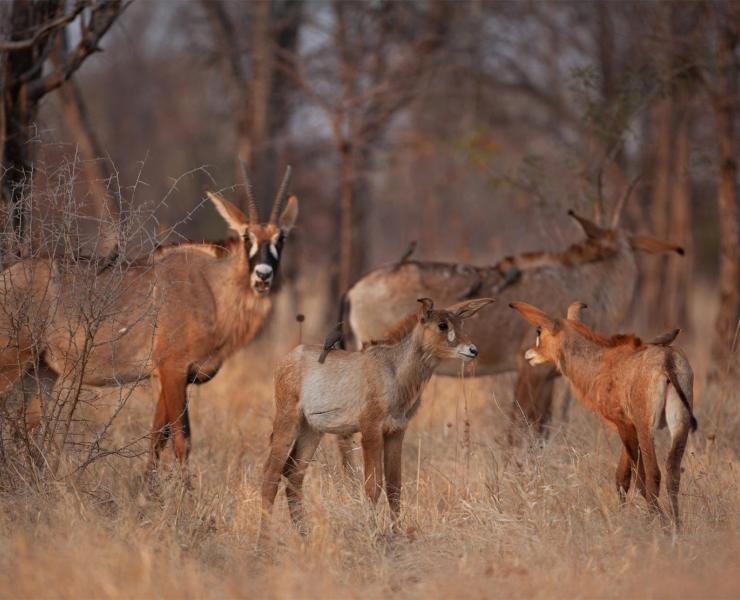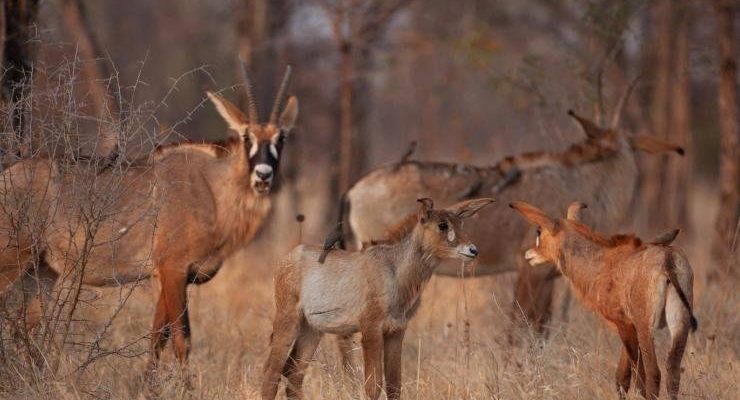
Roan antelopes are known for their impressive size and distinctive features, making them a must-see during a safari. But appreciating nature from a distance is one thing, and actually being closer than you expected is another. So, let me break down what you need to know to stay safe and enjoy the moment if you ever find yourself face-to-face with one of these beautiful creatures.
Recognize the Roan Antelope
To prepare for any encounter, it’s crucial to know what you’re dealing with. The roan antelope is one of the largest antelope species and can weigh anywhere from 400 to 600 pounds. They’re usually a mix of grey and reddish-brown, with a distinctive light-colored face and long, curved horns that can grow up to three feet long.
Their long legs give them an elegant appearance, and their large ears allow them to pick up sounds from far away. Roan antelopes are social animals, often seen in small groups. If you spot one, there’s a good chance it might have friends nearby, too. Understanding their behavior can help you gauge your distance and decide your next move.
Understanding Their Behavior
Roan antelopes are generally calm and not aggressive unless they feel threatened. They use their powerful legs to kick back against any predators. That said, it’s essential to respect their space. If you get too close, a roan antelope might feel cornered, leading to an unexpected reaction.
You might find them grazing or lounging, seemingly unfazed by nearby humans. But if their ears perk up or they lift their heads suddenly, that’s a signal to back off a bit. They can also snort or stamp their feet if they sense danger, which is another indicator that it’s time to create distance. The best approach is to admire them quietly and from a safe distance.
Staying Calm and Observing
If you find yourself in the presence of a roan antelope, it’s important to keep your cool. Wildlife encounters can be exhilarating, but they can also be unpredictable. Here’s what you should remember:
- Stay Quiet: Loud noises can startle the antelope and make it feel threatened.
- Take Slow Movements: Quick movements can provoke a reaction. Move gently to avoid alarming the animal.
- Keep Your Distance: Aim for a minimum of 100 yards between you and the antelope to ensure both your safety and theirs.
By being calm, you’ll not only observe the roan antelope in its natural habitat but also avoid scaring it away. Just think about how cool it is to witness such grace and strength up close!
Documenting the Encounter
If you’re with a camera or smartphone, you might be itching to snap some pictures. That’s totally understandable! A roan antelope is a breathtaking subject, after all. Here are some tips for documenting the encounter:
- Use a Zoom Lens: If you have a camera, a zoom lens will allow you to capture close-up shots without getting too close.
- Natural Light: Early morning or late afternoon provides the best lighting for photos, bringing out the rich colors of their fur.
- Patience is Key: Wait for the right moment when the antelope strikes a perfect pose or interacts with its surroundings.
Capturing your experience in photos can help you remember the beauty of the moment. Just be sure to respect the antelope’s space while doing so!
What If You’re Too Close?
Sometimes, despite our best efforts, a roan antelope could come within a surprising distance. If this happens, here’s how to handle the situation:
1. Stay Still – Don’t make sudden moves. Often, the animal will continue on its way if it feels you’re not a threat.
2. Back Away Slowly – Once it seems calm, gently step back. Avoid turning your back on the antelope, as sudden movements might startle it.
3. Observe the Antelope’s Body Language – If the antelope seems agitated, it might snort or paw at the ground. If you see this, slowly create more distance.
It’s always best to err on the side of caution. Remember, wild animals should be treated with respect.
How to Stay Safe in the Wild
Whether you’re in search of roan antelopes or just enjoying the landscape, your safety should always come first. Here are some essential tips when exploring the wild:
- Stick to Designated Trails: Avoid wandering off the beaten path to minimize your impact on wildlife.
- Have a Buddy System: It’s safer to explore with a friend, as you can watch each other’s backs.
- Carry Bear Spray (if applicable): Depending on the region, having bear spray or similar deterrents can add an extra layer of safety.
Being prepared and aware will help ensure you have an enjoyable and safe experience in nature.
Respecting the Wildlife and Environment
Every encounter with wildlife is a reminder of how important it is to respect the natural world. Here’s why this matters:
- Conservation: Roan antelopes are part of a delicate ecosystem. Protecting their habitats helps ensure their survival.
- Minimize Human Impact: The more we respect wildlife, the less likely they are to be stressed by human activity.
- Education: Each encounter can teach us about the animal’s behavior and the environment surrounding it, fostering a deeper appreciation.
When we treat the wild with respect, we’re playing a part in protecting these amazing creatures for future generations.
Final Thoughts
Encountering a roan antelope in the wild can be a breathtaking experience, but it’s important to approach it with caution, respect, and awareness. Remember to observe from a safe distance, stay calm, and document the moment if the situation allows. By following these guidelines, you’ll not only enjoy the beautiful interactions with wildlife but also contribute to their preservation.
So, next time you find yourself in the wild, whether it’s in search of roan antelopes or other fascinating creatures, keep these tips in mind. Nature is a gift, and experiencing it safely ensures we can continue to enjoy its wonders for years to come.

